| کد مقاله | کد نشریه | سال انتشار | مقاله انگلیسی | نسخه تمام متن |
|---|---|---|---|---|
| 2012116 | 1067025 | 2010 | 13 صفحه PDF | دانلود رایگان |

Liver X receptor (LXR) α and β are ligand-activated transcription factors that regulate the expression of genes involved in the removal of cholesterol from cells by high-density lipoproteins, the transport of cholesterol to the liver and the biliary excretion of cholesterol. LXRs are activated by oxygenated cholesterol derivatives such as 24(S), 25-epoxycholesterol or 24(S)-, 25- and 27-hydroxy-cholesterol. In this review, we will discuss the role of LXR in the reproductive system and perspectives on the application of LXR agonists in the treatment of reproductive pathologies. Interestingly, progressive age-related impairment of fertility is observed in both female and male LXR knockout mice. Reduced fertility in female LXR knockout mice is associated with resistance to follicular fluid meiosis-activating sterol (FF-MAS), the intermediate of cholesterol synthesis generated in the ovaries that is responsible for stimulating oocyte meiosis partially in a LXR-dependent manner. Female mice lacking both LXR isoforms exhibit symptoms of ovarian hyperstimulation syndrome when treated with pharmacological doses of gonadotropins. LXR agonists have mainly been considered as potential anti-atherosclerotic medications. However, experimental studies suggest that natural or synthetic LXR agonists may also effectively treat some reproductive pathologies, such as infertility, impaired uterine contractility, hormone-dependent cancers and insulin resistance in patients with polycystic ovarian syndrome. However, the specific adverse effects of LXR agonists on the reproductive system must also be considered. Adverse effects of LXR agonists include impaired trophoblast invasion, excessive transplacental cholesterol transport from the mother to the fetus leading to fetal hypercholesterolemia, and augmented estrogen deficiency after menopause.
Journal: Pharmacological Reports - Volume 62, Issue 1, January–February 2010, Pages 15–27